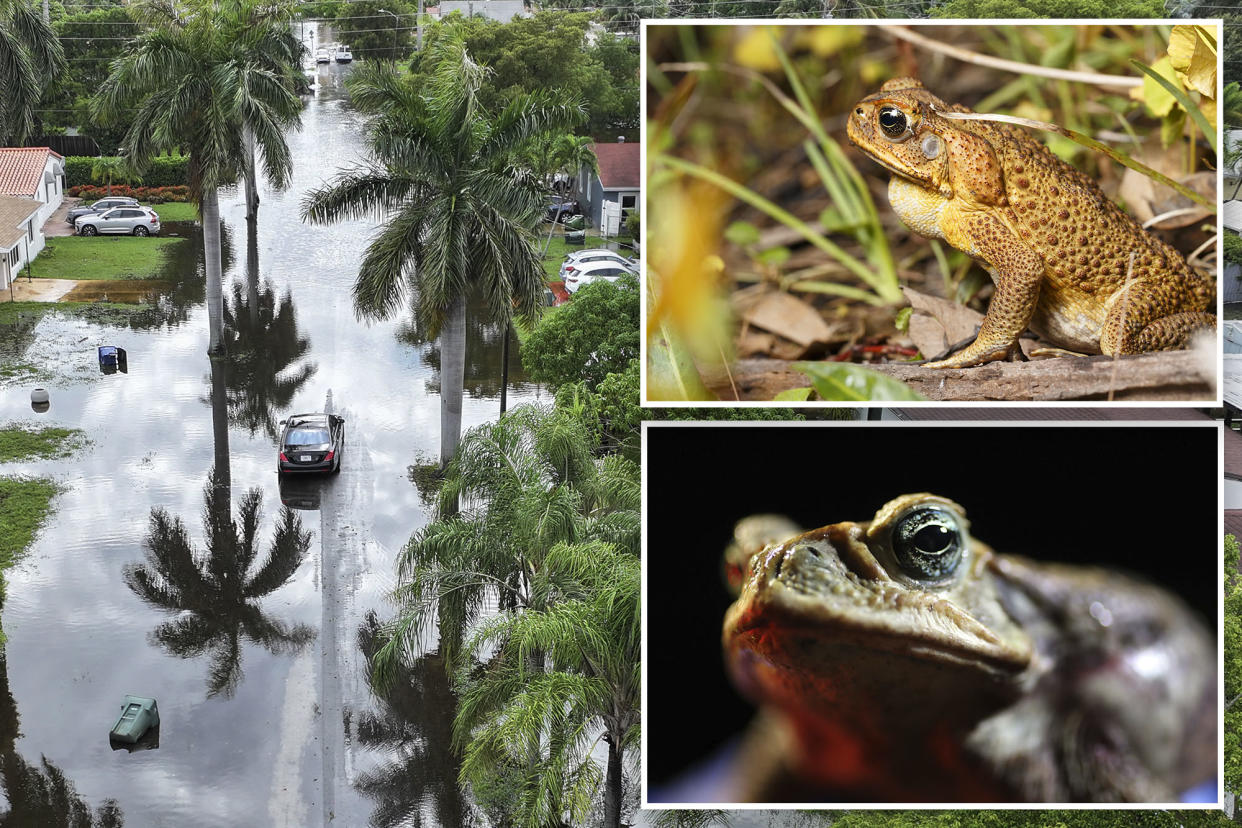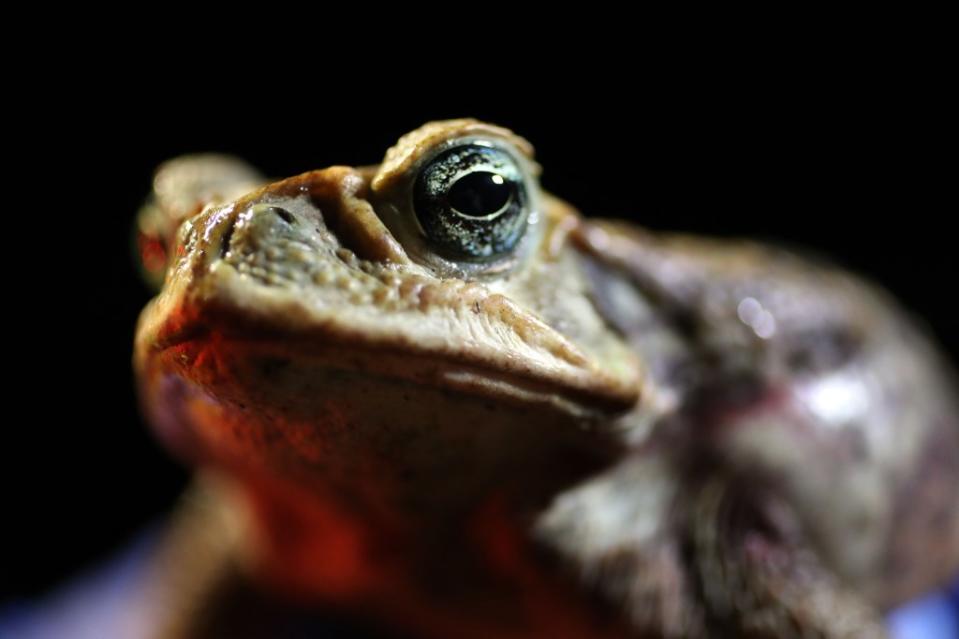Rainy weather brings toxic cane toads — how to keep your pets safe from the lethal invaders

Let’s hop on a cull.
An alligator might eat your pet, but there’s a much sneakier predator lurking out there, waiting to harm your furriest family members — if you live in waterlogged Southern Florida, that is.
Particularly during the rainy season, four-legged friends in the Sunshine State are under threat from an invasive species known as the cane toad, which can kill a small animal in just minutes just by sitting there.

They don’t need to physically attack — the toxic, milky poison they secrete in the glands behind their eyes does the job for them.
A curious kitty or pupper only has to give the cretinous creature a lick, and in many cases, it’s curtains. The toxin is even found in cane toad eggs and their tadpoles, the Naples News reported.
Native to South America and traditionally found as far north as the Rio Grande, cane toads were reportedly brought to Florida in the1930s and 1940s to help tamp down pest infestations in the sugar cane crop.
To humans, they’re mostly annoying for their loud night calls — though you still don’t want to touch or ingest any of this gunk.
Shades of brown with a lighter-colored belly, sometimes described as yellow or beige, cane toads can, by Florida law, be snuffed out on sight, as long as you have a landowner’s permission to do so.

You can’t watch everything your pet does outdoors — so how do you know if they’re suffering from cane toad poisoning?
Experts say look for drooling and frothing at the mouth, vomiting and diarrhea, or red gums and oral discomfort.
Eventually, there can be seizures, difficulty breathing, lack of balance, tremors, and changes in resting heart rate.

How to treat cane poisoning in pets? The first thing you should be doing is flushing their mouth out with copious amounts of water, keeping their heads facing downward to discourage swallowing or inhalation.
Then, rinse their mouth, face and eyes as thoroughly as you can.
After wiping down their gums and tongue to attempt to remove any last trace of the toxins, bundle your baby off to the nearest vet.
And while there’s no way to completely prevent poisoning short of never letting them out of the house, you can start by limiting outdoor time to daylight hours — cane toads tend to be more active after dark.
Alternately, build a protected outdoor area for pets — the fence must have zero gaps to be truly toad proof.
Make sure there’s no standing water inside the perimeter for them to get comfortable in, either.
And finally, it can help to keep your grass clipped as short as possible — less room for the cane toad to hide.
Killing cane toads is legal, if you come across one or more — provided you have permission of the landowner you’re committing toad murder on.
Fortunately, culling the herd can be as simple as tossing one in the freezer, then dumping it in the trash. Just make sure to wear gloves and protective eyewear when handling the animals.

